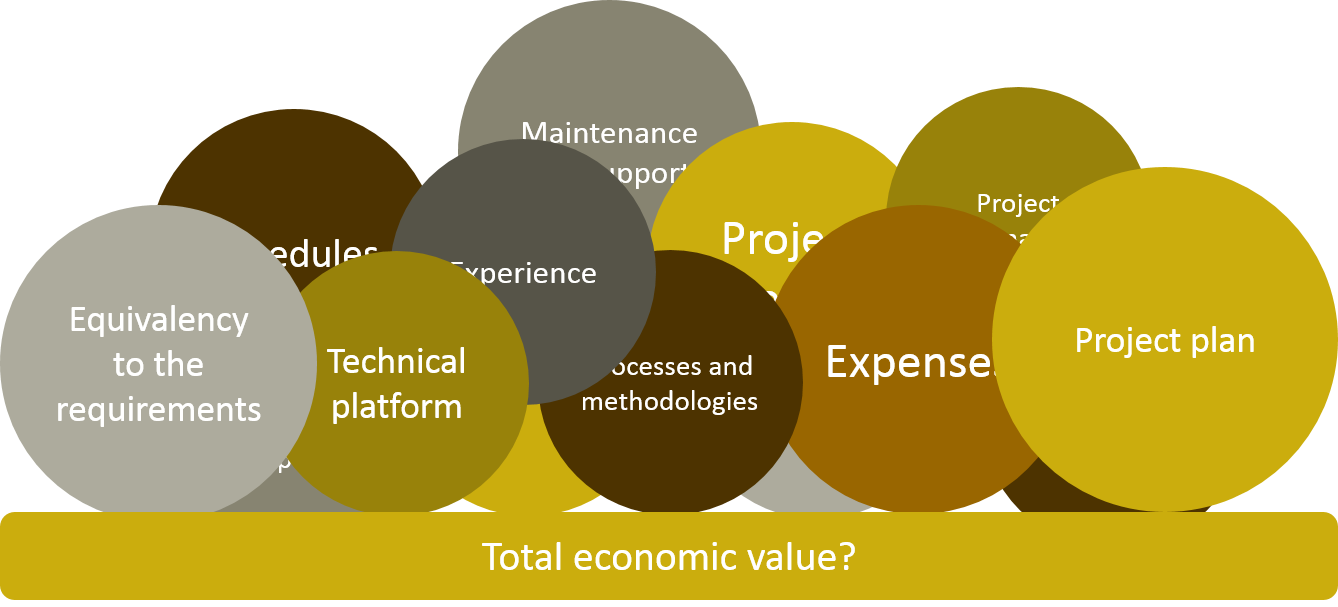Buying a software project may sometimes be a nightmarish experience. After all that labor you have put into documenting your requirements and creating an effective request for tender, you get a truckload of paper from the tenderers, and they all seem to have completely different views on your needs. How can you compare the tenders and what should you be looking for?
North Patrol is a consulting firm specialized in the design of digital services and information systems. We shape ideas into a vision and service concept, find the best architectural and technological solutions, design a functional user experience, and compete to find the ideal partner for implementation work. We do not sell implementation projects, nor do we sell licenses; we are genuinely on the side of the customer.

In Finland, the procurement policies of government agencies state that the selection has to be done based on either total costs alone or the best total economic value. This means that if you want to include some qualitative values to the comparison, you need to go for the best total economic value. But that does not help you much further. How can you define what gives you the best total economic value?
When you know what you need and the requirements are well documented, comparing the tenders gets easier. Here are five tips you can use when comparing:
1. Watch out for the copy-paste project method
Don't let the copy-paste method fool you in a project plan. Quite often we see tenders that describe the project phases professionally and in really in-depth detail, but still it seems like something does not match. A closer look may reveal that the project plan describes project phases that are not in the Gantt schedule or not included in the price.
Most of the suppliers have their own general project models well documented. These are good copy-paste material for their sales, but for you, the key point is how well the plan describes your actual project.
2. Choose a partner that works like you
Value those project plans higher that have the best fit for your way of working. The project plan should give you a good picture of what your responsibilities in the project are, how much of your time is needed and in what project phase.
The chosen project model also has an impact on the resource needs on your side. With agile methods, the project group needs to commit deeply to testing and commenting on the outcomes during each sprint. With more waterfall-like project models, more time is needed in the specification phase before the actual implementation begins. Make sure that you also have enough time for the content input tasks.
Also, don't forget that time and resources are also needed for project aftercare and possible future enhancements. The service is rarely ready when the project is finished.
3. Ensure your own technical competencies
Invite at least one or two technical persons to the selection team who understand the business requirements and can also evaluate them against the offered technical solutions.
Unfortunately, the tenderers do not always share your vision of the functionalities being implemented. If the tenderer offers an implementation with an out-of-the-box feature of a product, but its user experience is "user hostile", the solution only fulfills the letter of the requirement, not its spirit. And getting what you really need will then cost you more.
4. Do you have a budget for the next few years, too?
Calculate total costs for at least three years. Make sure that after the project is finished, you still have budget and project resources left for the maintenance phase.
The vendors usually have a fixed monthly maintenance fee, but it may include only the help desk services and maintaining the development environment. Actual work costs extra. It is a good practice to add 2–4 full workdays of implementation work to the monthly maintenance fees. After the project phase is over, there is usually a number of change requests waiting for implementation, so most likely you will need to spend the money anyhow. And that way, you should also have the supplier’s key resources pre-booked for you.
Also, don't forget to include software licenses in the total costs, if they need to be paid from your budget.
5. Don’t hesitate to doubt
The prices of the tenders sometimes vary very much, and usually, there is a reason for this variety. If one or two tenders are a lot cheaper or more expensive than the others, or the estimated amount of workdays needed vary very much, the tenderer may have misunderstood some of your needs. Or they may have some ready-made add-on component that makes for less implementation work and project costs. Sometimes, the tenderer intends to outsource the project team, which explains the differences in total costs. Try to find out where the difference really is. It is always there, it just needs to be dug out.
When you have finished the comparison, if possible, invite the top two or three candidates to a face-to-face meeting before you make the final decision. Hopefully, you'll get a live demonstration of the offered solution, but more importantly, you'll be able to physically meet the project team that you will be working with intensively for quite some time.


